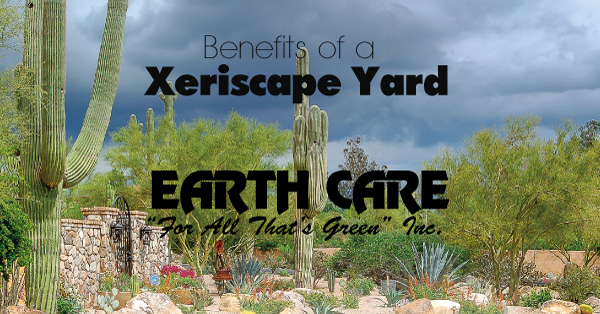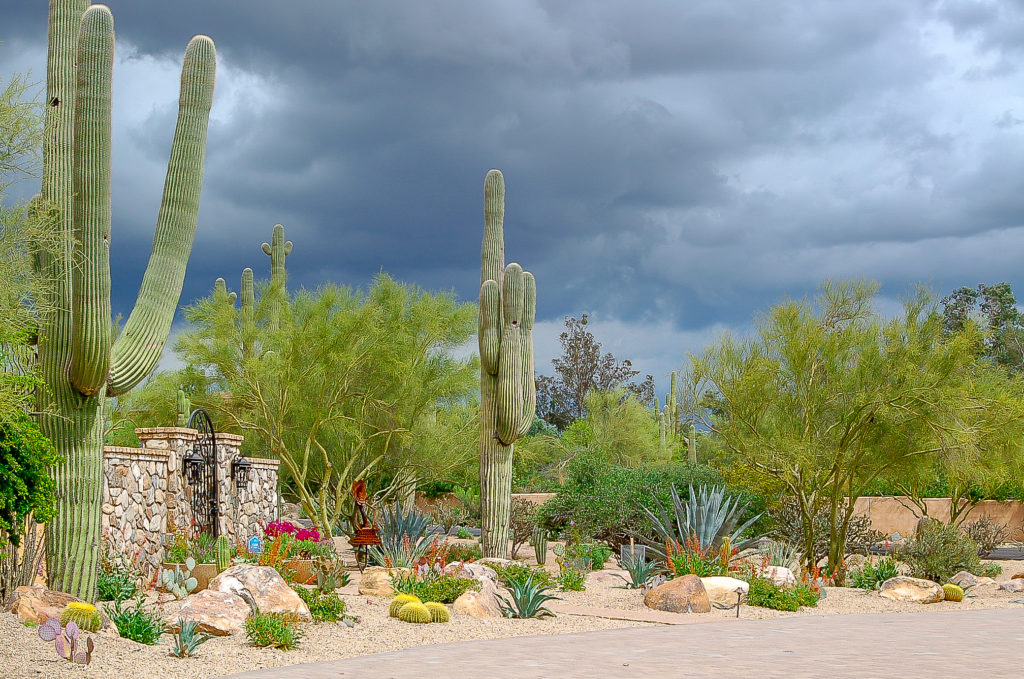



The term Xeriscape refers to a style of landscaping design and plant selection that demands minimal water and maintenance. Here in the Sonoran Desert, it also has a special focus on utilizing native plant species in combination with arid-region, non-invasive species from throughout the Southwest.
In short, Xeriscape focuses on preserving resources through thoughtful design and implementation of the site and landscape features. It isn’t, necessarily, about using fewer plants in order to require less water. In fact, many good examples of a Xeriscaped space can feel very lush and full, have great interest and variety, and last a long time. It is especially important in the Southwest to consider how our sites (our landscapes and the way we interact with them) consume water.
According to GreenBuildingAdvisor.com Xeriscape is about sustainability,
“Among other things, xeriscape encourages careful planning, efficient irrigation, soil improvements, the use of mulches and choosing appropriate plants for the site. Native plants need less watering and less chemical intervention to remain healthy.
Xeriscape is really about going to a site and finding exactly what you’d expect to find had humans not intervened. Suppose you bought a house lot in the desert. The last thing you’d find on the site was a lush, green lawn. But that’s exactly what our culture has encouraged, at the collective cost of millions of gallons of water and millions of pounds of chemical fertilizers and insecticides.
The issue is especially sensitive in parts of the western U.S. where water is in short supply. It’s hard to justify the flagrant waste of water when there is so little of it to go around. In Las Vegas, Nevada, these concerns have prompted city officials to pay residents to tear up turf and replace it with plants that don’t need as much water. Since the program began, six square miles of lawn have been removed. Each square foot of removed turf saves about 55 gallons of water per year.
Choosing appropriate plants is one of many ways that site development and landscaping can become more sustainable. Choosing permeable driveway and sidewalk materials, establishing rain gardens to control runoff and preserving deciduous shade trees to keep the house cooler in summer all are logical companions to xeriscape design.”
As important as it is to be mindful of water use, there are other benefits as well.
Save water: Without a doubt, the biggest benefit of xeriscaping is that you need less water to maintain landscaping. Water is not endless, especially in the desert, and so it is important that all desert dwellers do their part to conserve this precious, natural resource.
Save money: When you save water, you save money. The money savings go beyond the water bill. In many cases, xeriscaping products are less expensive than rolls and rolls of sod and lush green shrubbery. For example, rocks cost less than turf. Xeriscape also makes use of native species, meaning you can leave some of your natural landscape in place requiring less area to be planted with purchased plants.
Save time: Since decorative granite and native plants are low maintenance, you don’t have to worry about pushing a lawnmower on a 110°F day, or spend the money to have somebody do it for you. The only maintenance a xeriscaped front yard needs is a little trimming a few times a year, followed by a spot treatment for weeds in the spring.
Restore habitat: A key concept of xeriscaping is choosing the right plants for your area. You’ll want to seek out plants that are native to where you live since they tend to require less maintenance and have a better chance of surviving in the climate conditions because they can adapt to the natural amount of rainfall in the area. Local plants are also more likely to attract wildlife to your garden, including butterflies, hummingbirds, and native wildlife seeking natural habitat.
Erosion control: Low water use plants usually have fairly robust root systems. Because of this, xeriscaped gardens are great for soil stabilization and erosion control.
Minimize footprint: Overall, xeriscaping is about sustainability. By planting low water use species that require less/no chemical treatment and less maintenance we are vastly reducing the resource draw required to keep our yards healthy and beautiful. Less maintenance also means less use of fuel for machines like mowers, blowers, and mulchers in the annual maintenance of our landscapes. Add to this the use of high-efficiency drip-irrigation systems and low-voltage landscape lighting and a Xeriscaped yard can have next to ZERO footprint.
If you are interested in converting your yard to a more water-friendly, sustainable Xeriscaped space feel free to contact Earth Care for a consultation.